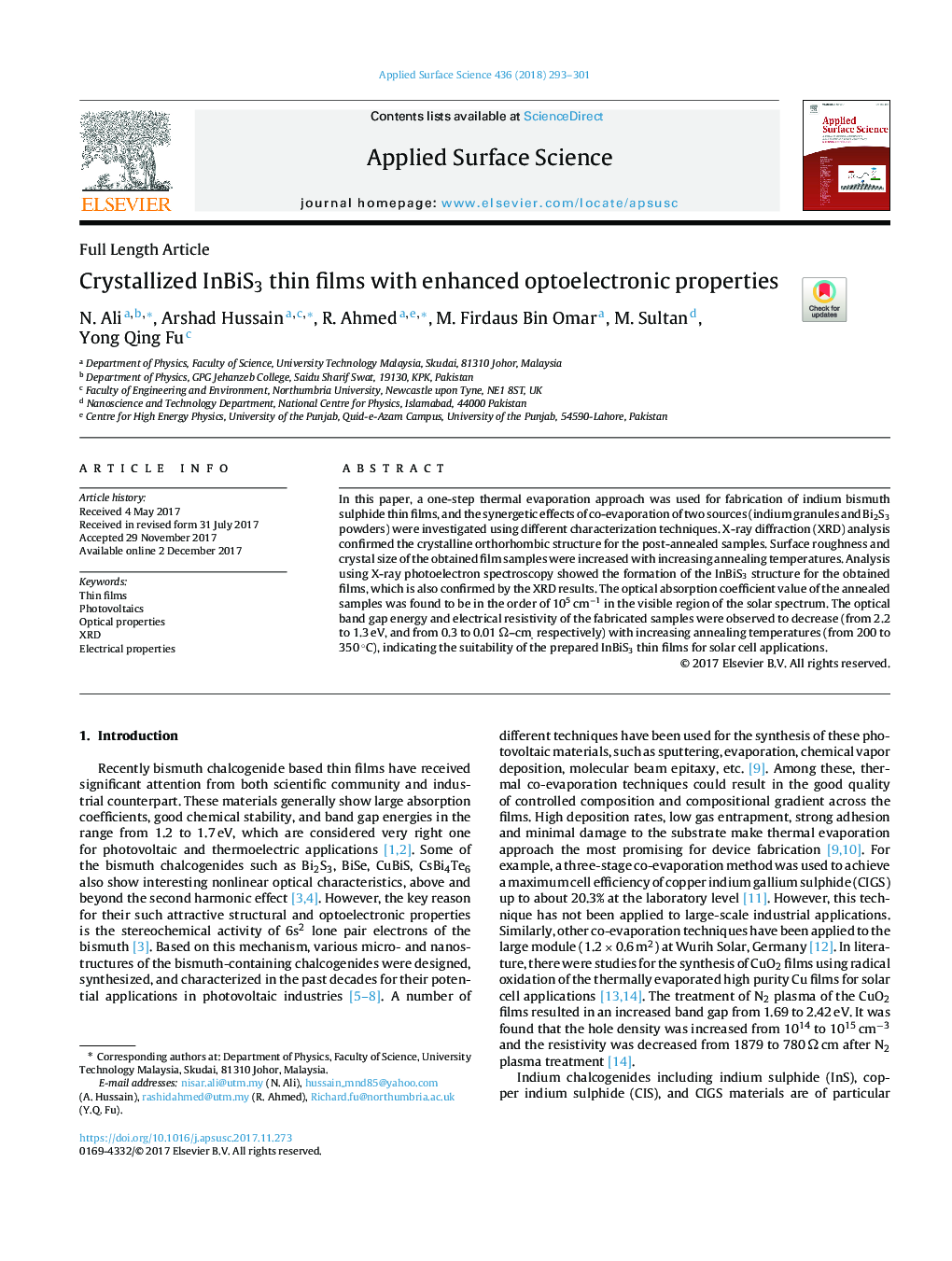| Article ID | Journal | Published Year | Pages | File Type |
|---|---|---|---|---|
| 7835749 | Applied Surface Science | 2018 | 9 Pages |
Abstract
In this paper, a one-step thermal evaporation approach was used for fabrication of indium bismuth sulphide thin films, and the synergetic effects of co-evaporation of two sources (indium granules and Bi2S3 powders) were investigated using different characterization techniques. X-ray diffraction (XRD) analysis confirmed the crystalline orthorhombic structure for the post-annealed samples. Surface roughness and crystal size of the obtained film samples were increased with increasing annealing temperatures. Analysis using X-ray photoelectron spectroscopy showed the formation of the InBiS3 structure for the obtained films, which is also confirmed by the XRD results. The optical absorption coefficient value of the annealed samples was found to be in the order of 105âcmâ1 in the visible region of the solar spectrum. The optical band gap energy and electrical resistivity of the fabricated samples were observed to decrease (from 2.2 to 1.3âeV, and from 0.3 to 0.01âΩ-cm, respectively) with increasing annealing temperatures (from 200 to 350â°C), indicating the suitability of the prepared InBiS3 thin films for solar cell applications.
Related Topics
Physical Sciences and Engineering
Chemistry
Physical and Theoretical Chemistry
Authors
N. Ali, Arshad Hussain, R. Ahmed, M. Firdaus Bin Omar, M. Sultan, Yong Qing Fu,
